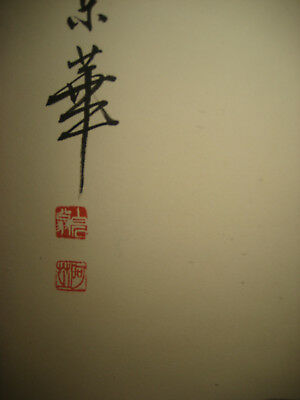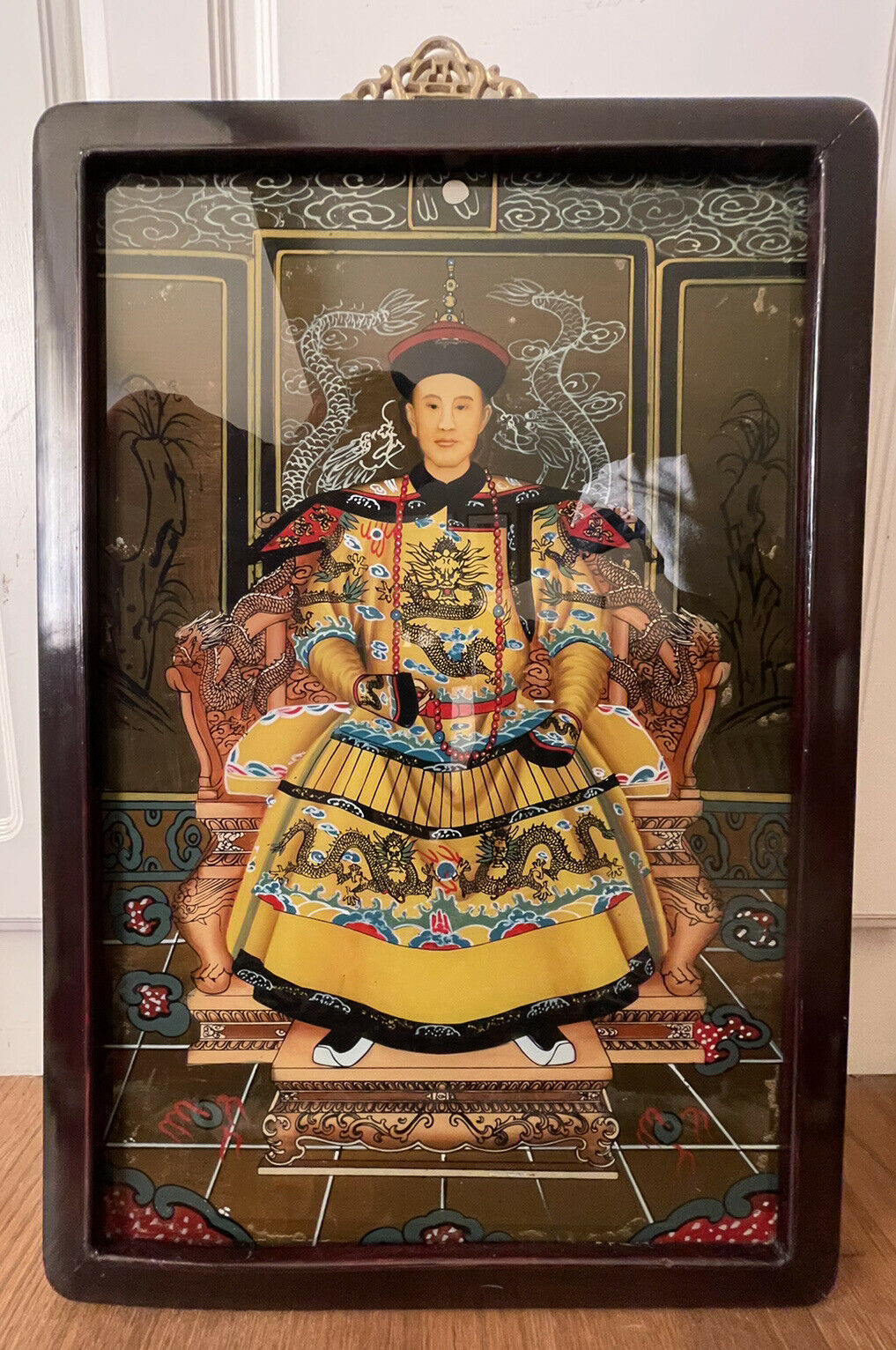-40%
Chinese 100% Hand painting scroll about Mouses Candle By Qi Baishi ķĮÉńÖĮń¤│ ĶĆüķ╝ĀĶÉØÕŹ£ńü»ÕÅ░
$ 104.01
- Description
- Size Guide
Description
Scroll size:225cm├Ś81cmPainting size
:
134cm├Ś67cm
Country of Origin: China
Conditions: a complete, no defects.
Qi Baishi (simplified Chinese: ķĮÉńÖĮń¤│; traditional Chinese: ķĮŖńÖĮń¤│; pinyin: Q├Ł B├Īish├Ł; WadeŌĆōGiles: Ch'i Pai-shih) (January 1, 1864 ŌĆō September 16, 1957) was an influential Chinese painter.Born to a peasant family from Xiangtan, Hunan, Qi became a carpenter at 14, and learned to paint by himself. After he turned 40, he traveled, visiting various scenic spots in China. After 1917 he settled in Beijing.He is perhaps the most noted for the whimsical, often playful style of his watercolor works.Some of Qi's major influences include the early Qing Dynasty painter Bada Shanren (Õģ½Õż¦Õ▒▒õ║║ or Zhu Da) and the Ming Dynasty artist Xu Wei (ՊɵĖŁ).His pseudonyms include Q├Ł Hu├Īng (ķĮŖńÆ£) and Q├Ł W├©iq─½ng (ķĮɵĖŁµĖģ). The subjects of his paintings include almost everything, commonly animals, scenery, figures, toys, vegetables, and so on. He theorized that "paintings must be something between likeness and unlikeness, much like today's vulgarians, but not like to cheat popular people". In his later years, many of his works depict mice, shrimp or birds.
He was also good at seal carving and called himself "the rich man of three hundred stone seals" (õĖēńÖŠń¤│ÕŹ░Õ»īń┐ü).In 1953 he was elected president of the Association of Chinese Artists. He died in Beijing in 1957.Wang Chao-Wen said that while Baishi was talking to a student in Peking he saw an outline of a bird on a brick floor in muddy water. He goes on to say that not everyone would have seen the bird, and that it was because Baishi was always concerned with finding new images to paint that he had a ŌĆ£special sensitivityŌĆØ (p. 129). It was said that Baishi had something special about him because he was constantly thinking about painting and had such a strong drive and motivation to be a great artist. (Chao-Wen p. 90698)Some excerpts from Qi BaishiŌĆÖs journal were found that represent his strong drive and passion for his work, not to mention his high confidence in his speciality. From the article ŌĆ£An Appreciation of Chi Pai-ShiŌĆÖs Paintings,ŌĆØ (Baishi was previously known as Chi Pai-Shi) his journal entry reads as follows:ŌĆ£When I cut seals I do not abide by the old rules, and so I am accused of unorthodoxy. But I pity this generationŌĆÖs stupidity, for they do not seem to realize that the Chin and Han artists were human and so are we, and we may have our unique qualities tooŌĆ” Such classical artists as Ching-teng, Hsueh-ko and Ta-ti-tzu dared to make bold strokes in their paintings, for which I admire them tremendously. My one regret is that I was not born three hundred years ago, for then I could have asked to grind ink or hold the paper for those gentleman, and if they would not have me I should have starved outside their doors rather than move away. How wonderful that would have been! I suppose future generations will admire our present artists just as much as we admire these men of old. What a pity that I will not be there to see it!ŌĆØ (Wang Chao-Wen p. 130-131)From this excerpt it is evident that Qi Baishi was serious about his work. Because of BaishiŌĆÖs talk about wanting to be human it was clear that he was educated about the times and the political issues that were going on while he was making his art work, which is powerful because he never took any political stance in any of his art works. This except also shows how passionate he was about other artists and how much he would want to be mentored by them.What is unique about Baishi is that his works show no western influences, unlike most other artists at this time. Other artists praised Baishi for his ŌĆ£freshness and spontaneity that he brought to the familiar genres of birds and flowers, insects and grasses, hermit-scholars and landscapesŌĆØ (Xiangtan, p. 2). Even though Baishi wasnŌĆÖt the first artist to focus on small things in nature, he was recognized for his very careful and beautiful way of painting such common images.Forgery of Qi Baishi's work, and misattribution of work by others to him, has become common in the contemporary art market.[1][2] He is estimated to have produced between 8,000 and 15,000 distinct works throughout his life,[2] of which 3,000 are in museums; however, since 1993, auction houses have attempted to sell over 18,000 distinct works attributed to him.[1] One of his paintings, Eagle Standing on Pine Tree, was sold for 425.5 million yuan (.5 million) in 2011, becoming one of the most expensive paintings ever sold at auction.[3] However, doubts to the painting's authenticity was later raised by the bidder.[1]
payment
We accepted PayPal only .
We apologize that we cannot accept other payment methods .
Shipping
We ship worldwide with air mail , all orders will be shipped via registered air mail within 24 hours after receiving your verified payment (Excluding Weekends and Public Holidays) .
It will takes about 10-25 days to USA or Europe , 7-35 business days to arrive for worldwide



















